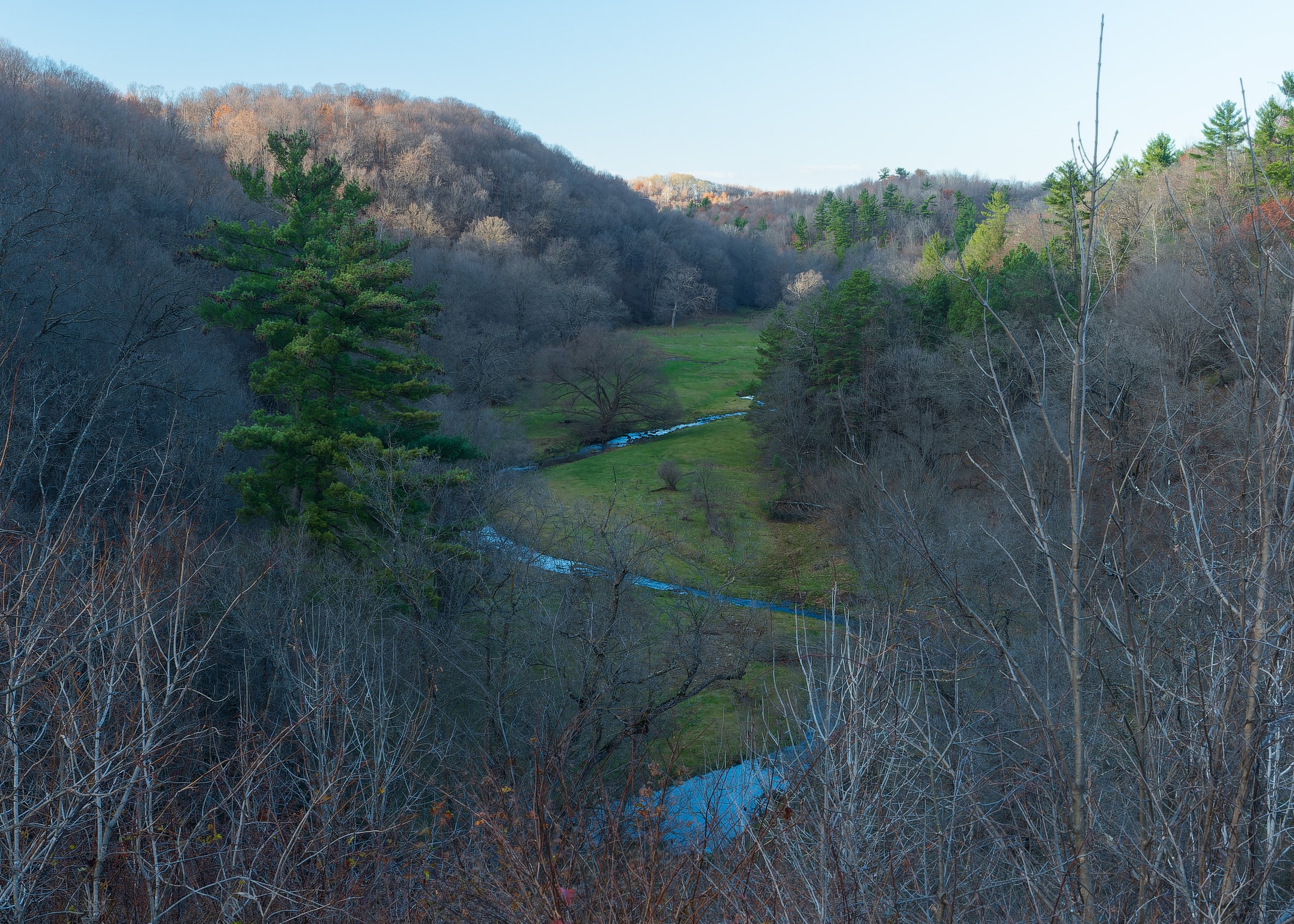White Pine
In my photographic road trips throughout the Chippewa River Valley in Wisconsin and in my research of the history of the valley, I’ve identified three trees I think area iconic to the area: the eastern white pine, the sugar maple, and the paper birch.
The eastern white pine is largest tree in the north woods of the northern United States and southern Canada. Unfortunately, only 1% of the old-growth white pines (that have a life span of over 300 years) survived the logging of the 19th and 20th centuries. In the old-growth forests, trees 150 feet tall and 40 inches wide were common but today are rare. One is more likely to find trees 100 feet tall and 24 to 36 inches wide.
White pine on a road in eastern Colorado
The white pine is a foundation species; plants that are large, common, and have a great effect on the movement of energy and nutrients through an ecosystem. They are also large enough to provide habitat for other plants and animals.
Evidence shows that the oldest known pine is from 133 to 140 million years ago. It developed in Nova Scotia; then its descendants spread westward into the United States and Ontario.
About 103 to 120 million years ago, the Pinus genus evolved into two branches; the yellow or hard pines and the white or soft pines.
About 60 million years ago, the ancestral white pine radiated into new species. Since then, major climate fluctuations have periodically driven the various white pine species into refuges.
One type of fluctuation was between warmer tropical conditions and cooler temperate ones. The tropical conditions were not kind to the white pines. In response, they retreated into refuges in the cooler conditions at higher elevations in the Rockies. The mountain topography imposed barriers between different communities of trees, allowing for differential evolution into different species. The cycle from tropical to temperate and back repeated many times. Each climate cycle drove the accompanying cycle of isolation of communities thus driving evolution and diversity. Of today's 40 species of pine in North America, most arose from these climate cycles.
The other type of fluctuation was the expansion and contraction of the continental ice sheets. As the sheets advanced, the pines were again forced into refuges, this time to the south in warmer latitudes; specifically into what is now Virginia and North Carolina. After the advances and retreats, the modern eastern white pine, Pinus strobus, had evolved. Through the analysis and dating of pollen from the sediments at the bottom of lakes, scientists have determined that the white pine began its return to the Great Lakes region about 10,000 years ago and reached western Wisconsin about 8,000 years ago.
Here are a few of my photos of white pines in northwest Wisconsin.






